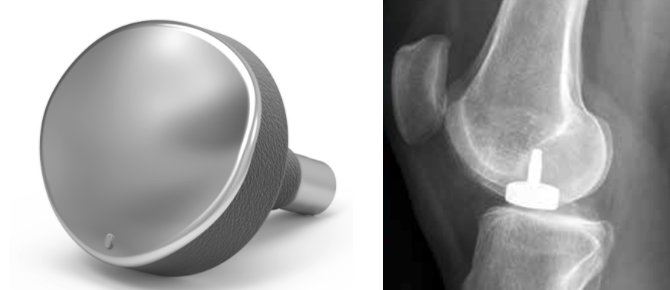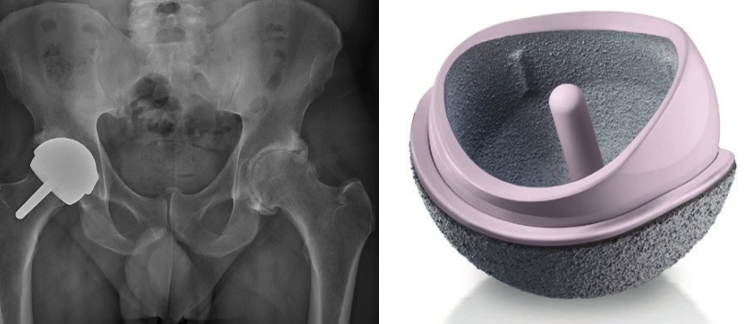
TREATMENT
Joint replacement for young and/or active patients
A young age and high level of activity are no longer obstacles to joint replacements. A significant decline in your quality of life, despite optimized non-surgical treatment, is the main indication to proceed with surgery.
Young patients benefit from surgical techniques and implants that preserve bone stock, joint ligaments, and surrounding muscles. In the event a revision surgery is required, it will be possible to simply convert to a more conventional replacement:
- The knee osteoarthritis of this 60 years old is ideally treated with a partial replacement (uni-compartmental).
- Isolated cartilaginous defect of the knee can be treated with focal femoral resurfacing implants (episealerTM)
- The hip osteoarthritis of this 60 years old is ideally be treated by a hip resurfacing or a total hip replacement using a femoral neck mini stem.

Focal non-degenerative knee injury

Left total hip replacement

Hip resurfacing

Medial femoro-tibial osteoarthritis
Graph demonstrating good longevity of total knee replacements, regardless of the patient's age. Modern replacements probably allow for an even better longevity due to continuous improvement in quality of the implants and the subspecialisation of the surgeons/care centers. Source: Bayliss, Lee E., et al. "The effect of patient age at intervention on risk of implant revision after total replacement of the hip or knee: a population-based cohort study." The Lancet 389.10077 (2017): 1424-1430.

Before and after your procedure
Choice of Anesthesia and Postoperative Pain Control

Technology
Computer-Assisted Total Joint Replacement


